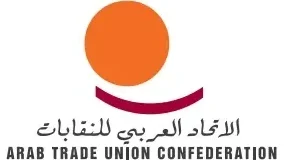الحوار الاجتماعي والمفاوضات الجماعية:
(المنصة التعليمية للاتحاد العربي للنقابات)
الزميلات والزملاء الأعزاء،
يسرّنا أن نقدّم لكم هذا الدرس ضمن المنصة التعليمية للاتحاد العربي للنقابات، والذي يتناول موضوعًا محوريًا في الحياة النقابية وفي بناء علاقات مهنية عادلة ومستقرة، وهو: الحوار الاجتماعي والمفاوضات الجماعية.
يشكل الحوار الاجتماعي إحدى الركائز الأساسية للعمل اللائق، وهو الأداة الأنجع لحل النزاعات، وبناء التوافقات، وضمان مشاركة حقيقية للعمال في صنع القرارات الاقتصادية والاجتماعية. أما المفاوضات الجماعية، فهي الآلية العملية التي تمكّن النقابات من الدفاع عن حقوق العمال وتحسين شروط العمل عبر اتفاقيات جماعية مكتوبة وملزمة.
في هذا الدرس، سنسعى إلى:
مقدمة لمفهوم المفاوضة الجماعية وأهميتها كحق معترف به في الاتفاقيات الدولية (مثل اتفاقية منظمة العمل الدولية رقم 98).
• نظرة عامة على المراحل الرئيسية لعملية التفاوض: التحضير، وصياغة المطالب، والتفاوض، والتوصل إلى اتفاق.
• استكشاف عملي لتقنيات التفاوض الأساسية، بما في ذلك بناء المواقف، وإدارة الحوار، ومعالجة العقبات، وتجنب الجمود.
• مناقشة دراسات حالة وتجارب ميدانية من المنطقة العربية والعالم.
يتضمن الدرس أيضًا أدوات عملية مثل:
• نماذج لصياغة مطالب العمال.
• مخططات تحليل التفاوض.
• فيديوهات تدريبية تُحاكي سيناريوهات تفاوض حقيقية.
يُعد إتقان فن التفاوض الجماعي أمرًا أساسيًا لتمكين قادة النقابات العمالية من تحقيق مكاسب حقيقية وتحويل مطالب العمال إلى نتائج ملموسة - من خلال الإقناع والتنظيم والعمل النقابي المشروع.
لنبدأ هذا الدرس بروح التعاون والمشاركة، بينما نعمل على تعزيز مهاراتنا التفاوضية والدفاع عن كرامة العمل من خلال نقابات قوية وفعّالة.
